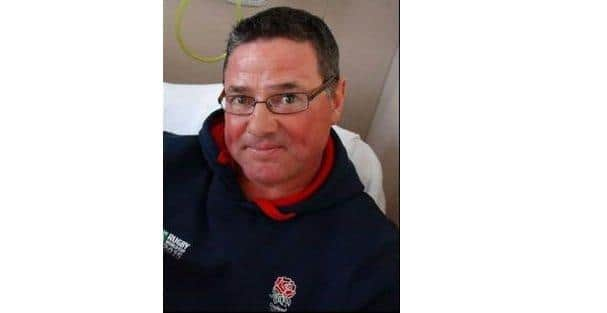Forensic experts find DNA of murder accused on blade used to kill Gosport man
and live on Freeview channel 276
A jury was told a black ‘sheathed blade’ was smeared in the blood of 53-year-old Andrew Oliver, who was stabbed to death at his home in Harwood Road, Bridgemary, Gosport, on February 1.
Mr Oliver’s older brother, Mark, has been accused of murder, with prosecutors saying the 56-year-old stabbed his unarmed sibling twice in the body and inflicted three knife wounds to his face in an alleged row over a pillowcase.
Advertisement
Hide AdAdvertisement
Hide AdOliver, who lived in Harwood Road with his younger brother and mother, has denied a charge of murder.


But jurors at Winchester Crown Court heard how experts had found Oliver’s DNA on the handle of the weapon.
Forensic scientist Edward Dowlman told the court he assessed the knife ‘which had blood staining on both sides’ of the blade.
Mr Dowlman told prosecutor Andrew Houston the DNA found from the blood ‘matched the profile’ of grandfather and dad-of-two Mr Oliver and that it was ‘one billion times more likely’ to have come from him than from any other person.
Advertisement
Hide AdAdvertisement
Hide AdSpeaking via videolink from Norwich Crown Court, the expert reached the same conclusion about the DNA profile found on the handle, telling the court: ‘It’s at least a billion times more likely the DNA had come from Andrew Oliver, Mark Oliver and an unknown individual rather than Andrew Oliver and two unknown individuals.’
Forensic tests were also carried out on a green hoodie allegedly worn by Oliver when he attacked his brother.
Oliver claimed he had been defending himself from his younger sibling at the time of the attack, claiming he had been bitten by his brother on the arm and back, and strangled.
But tests of the hoodie could find no ‘strong’ or ‘significant’ traces of saliva in the areas Oliver claimed to have been bitten, Mr Dowlman told the court.
Advertisement
Hide AdAdvertisement
Hide Ad‘Moderate’ levels of an enzyme in saliva had been found ‘at the edge’ of the testing paper used on the left forearm of the hoodie, he said.
But he told the court: ‘If an individual had been bitten, we would expect a strong, positive reaction from a specific area which would indicate a concentrated saliva on their clothing.
‘In this case, there were reactions however their strength was not strong – they were moderate or weak – and there was no specific area for me to consider targeting a DNA profile for any potential saliva staining present.’
Defence counsel Sarah Jones QC asked whether any of the scientists ‘considered’ testing further areas of the hoodie ‘moving to the direction of where some of the reaction seemed to be’.
Advertisement
Hide AdAdvertisement
Hide Ad‘I’m looking for a strong reaction to be able to fully address this allegation – that’s what will be required,’ Mr Dowlman replied. ‘Given that I wasn’t going to get any reaction from this, which is the best area to target, I decided not to go on and screen other areas.’
But another forensic scientist, giving evidence for the defence, told this court this could have been a mistake.
James Clery said the altercation between the two brothers would have been ‘dynamic’ and that the hoodie could have moved around, meaning saliva may be found on a different part of the jumper.
He added: ‘I might have extended the search given the fact that we did find those slightly stronger areas at the edge of the (testing) paper. It would have certainly been in their interests to test a bit further.
Advertisement
Hide AdAdvertisement
Hide Ad‘I think taking a slightly broader area of sampling might have been a good idea.’
(Proceeding)